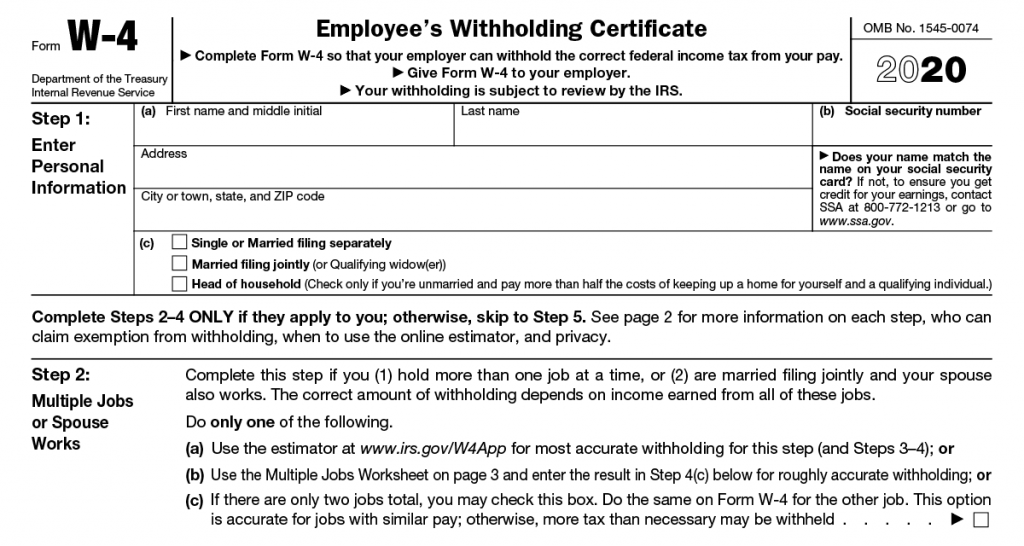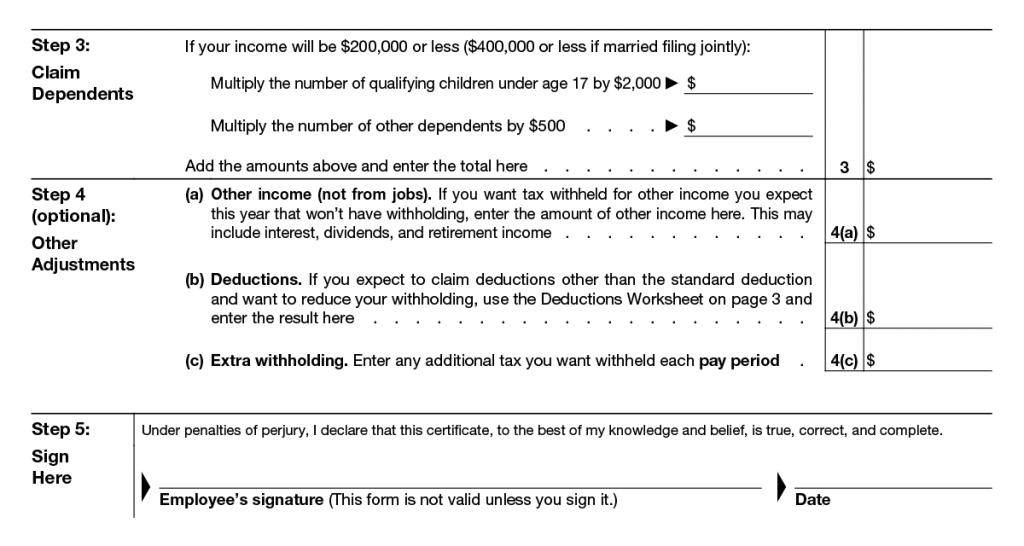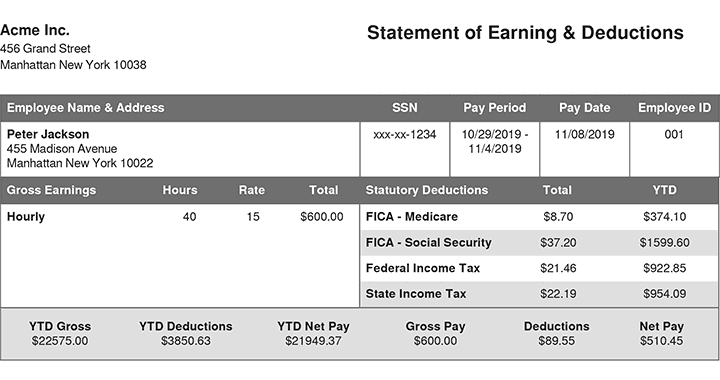What Information Do You Need Before Creating a Paystub?

Managing payroll requires planning.
To get payroll right, you need to have the right information, and that includes the data required to create pay stubs. A pay stub lists all of the key information related to an employee’s pay.
Both employers and workers need to understand the information on a pay stub. Employers must generate accurate pay stubs that match the gross pay, tax withholdings, and other payroll amounts. Workers need to review their pay stubs to verify that their wages were paid correctly.
The first step is to have each employee complete a Form W-4.
Working with Form W-4
The Employee’s Withholding Allowance Certificate (Form W-4) is a form that the federal government requires employees to fill out when they are newly hired. Information submitted on the form lets employers know how much salary to withhold from a paycheck for tax purposes.
Keep these points in mind:
- As an employer, you should keep an employee’s most current W-4 form in his or her payroll file.
- You need to make sure you add the correct number of allowances into your payroll processing system.
- If an employee fails to complete or sign the W-4 before the first payroll date, you must withhold federal income taxes as if the employee had chosen single filer status with zero allowances.
- Once completed, a copy of the signed W-4 form should be kept on file, because the IRS may request a copy.
Here is the W-4 form, Steps 1 and 2:

The W-4 collects the worker’s basic information (name, address, filing status) in Step 1. Step 2 addresses employees who have multiple jobs, or who have working spouses. There are extra resources listed to calculate withholdings for these situations.
Next, here are Steps 3, 4 and 5:

You compute the number of dependents in Step 3. You can adjust your withholding amount in Step 4, and taxpayer signs the form in Step 5.
Once you have a completed W-4, you’ll need to collect additional information for the pay stub.
Information Needed to Create a Pay Stub
Determine this information for each employee:
- Payroll cycle: The number of pay periods determines how much salary is paid on each payroll date. It also determines the start and ending days for computing hourly payroll.
- Wages: Gross pay and net pay. Wages may be based on a salary, or calculated using an hourly rate of pay.
- Tax withholdings: Federal, state, and possibly local amounts withheld for taxes.
- Benefit withholdings: Amounts withheld for the employee’s share of insurance premiums, or funds to be invested in a retirement plan.
The rules regarding pay stubs vary by state. Some states require employers to provide pay stubs to workers, while other states do not. Businesses should confirm the requirements in each state where they employ workers.
Employees should keep their most recent pay stubs as proof of income. If an individual applies for a loan, the pay stub confirms the borrower’s gross income.
The pay stub information should match the data on each employee’s year-end W-2 form, which individuals used to file their personal tax returns.
Specific Information on a Pay Stub

This information should be posted to each pay stub:
Gross wages
Wages earned before any withholdings or deductions are subtracted. Gross wages for a pay period amount are calculated in one of two ways:
- Salaried employees: (Annual salary / number of pay periods in a year)
- Hourly employees: (Hours worked X pay rate per hour)
Gross wages may include additional compensation, including sick pay, holiday pay, or bonuses.
Hours worked, pay rate
The hours worked total is particularly important for non-exempt (hourly) workers. The pay stub should include regular hours (up to 40 hours per week), and overtime hours.
The pay stub must detail all hours worked, and the rate of pay earned for each hour. Some workers, including those covered by union contracts, must be paid a specific rate of pay for overtime or double-time hours.
Salaried workers may also see hours listed on their pay stubs.
Tax deductions
Workers determine their federal income tax withholdings amounts by completing Form W-4, and each state has a tax withholding form.

FICA tax is collected to fund Social Security and Medicare. For 2020, the employee tax for Social Security is 6.2% on income earned up to $137,700. The Medicare tax rate is 1.45% on all wages, and high-income taxpayers will pay an additional 0.9% tax for Medicare. The total employee FICA tax rate is 7.65% in 2020.
Employers also pay 7.65%, and the cost is deducted as a business expense. The employer’s payments are typically included on the pay stub.
Benefit deductions
Workers often pay a share of the insurance premiums for company-provided health insurance, and may contribute into retirement plan, such as a 401(k) plan. 401(k) contributions are made with pre-tax dollars, and the employer may add matching contributions.
Unemployment taxes
Unemployment programs are funded by the FUTA tax (federal) and the SUTA tax (state). These amounts are paid by the employer, but also reported on the pay stub.
Net pay
Net pay is the actual dollars paid to the worker, after all deductions.
Take Charge of the Process
Employees need to generate accurate pay stubs, and using technology can help.
FormPros provides a pay stub generator that is user friendly, and helps you produce accurate pay stubs in less time. Use FormPros to take charge of the pay stub process.